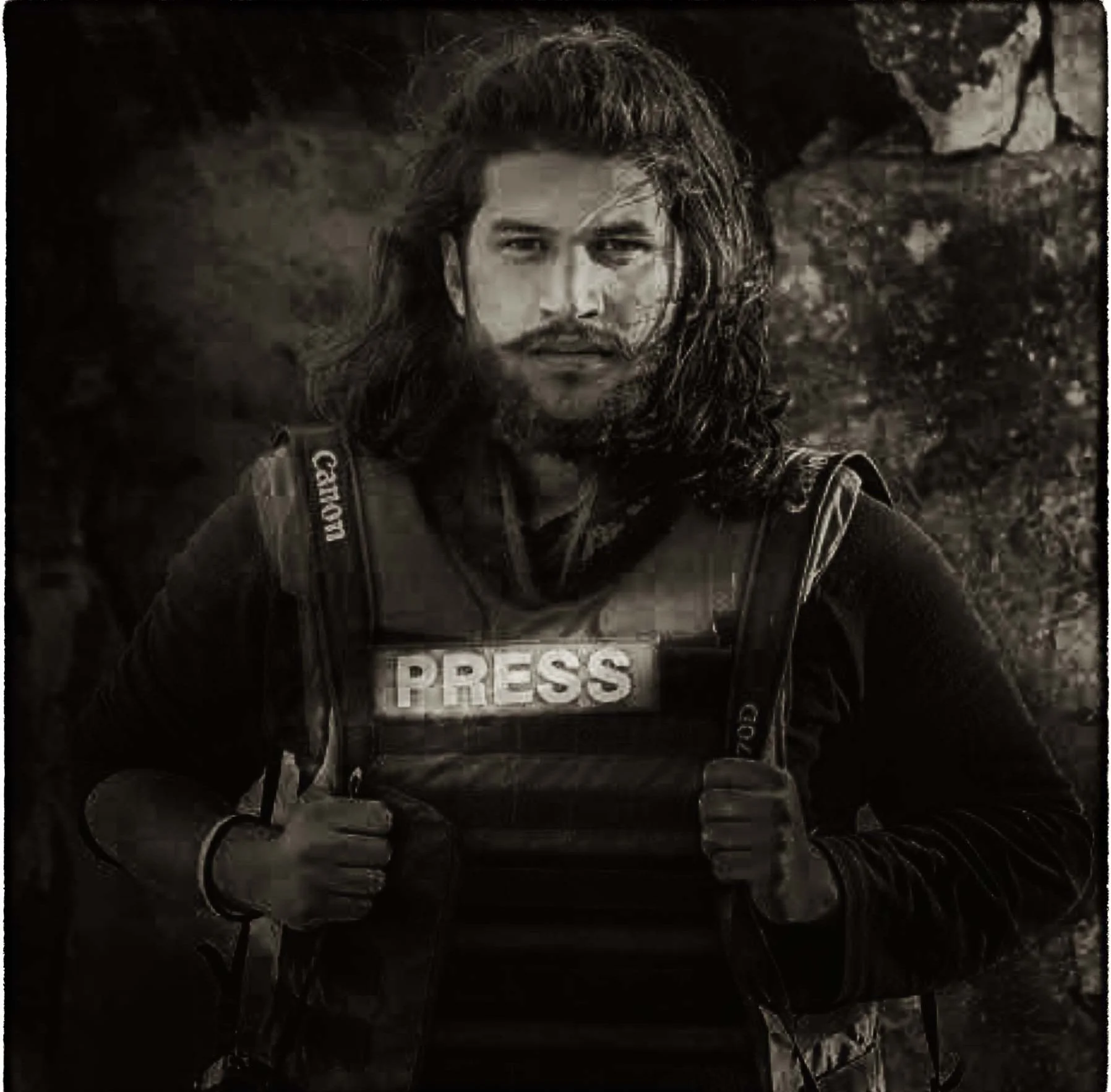Hosam Katan
“There is a sniper on the left side, so we have to lean forward and run fast,” the Syrian rebel commander told them. Then Mr. Katan sprinted forward. A third bullet tore into Mr. Katan’s abdomen.”
When a Syrian Army sniper shot Hosam Katan in Aleppo in May 2015, Mr. Katan couldn’t feel where the bullet had hit. He hoped it wasn’t his eye or his thigh. In five years photographing the Syrian conflict, he had seen enough colleagues shot to know which wounds were fatal, and which were not. As he lay bleeding, he realized he might soon join Marie Colvin and James Foley on the list of journalists killed covering Syria’s civil war.
His story is different, not just because he survived, but because he is Syrian. His story reveals much about how coverage of the conflict has changed: from a war reported by foreign correspondents flying in for brief visits to one almost entirely covered by local journalists with no means of escape. Many had little to no journalism experience, yet their work now forms the backbone of Western coverage.
He never thought he’d become a war photographer. He was a 17-year-old student in Aleppo when he joined protests against President Bashar al-Assad in 2011. When thousands of Syrians took to the streets to call for reform, he joined them. When the Islamic State took control of large parts of northern Syria and began kidnapping Western journalists, it was up to Syrian citizen journalists to step up, posting reports on social media.
He was with Syrian rebels one day in May 2015, after they had taken territory from the government. To avoid gunfire, the group left their vehicles and went on foot. “There is a sniper on the left side, so we have to lean forward and run fast,” a rebel commander told them. “The sniper doesn’t shoot that often.” Mr. Katan watched 10 men run ahead, and heard their giggles after they made it to safety. Then Mr. Katan sprinted forward — only for two bullets to kick up the dirt in front of him. A third bullet tore into Mr. Katan’s abdomen. He lay on his back, unsure of where he had been hit, or how long he had to live. Cut off from the others, he wriggled out of his flak jacket, unbuttoned his shirt, took a deep breath and rolled over. Grabbing a camera — “an instinctive reaction” for a young photographer — he started crawling back. One fighter extended his arm to Mr. Katan and pulled him away from the sniper’s sight. . “I didn’t want to die there,” he remembered. “I am not useful for my camera if I die.”
By Karam Shoumali Aug. 30, 2017
Add a caption here? More information??


